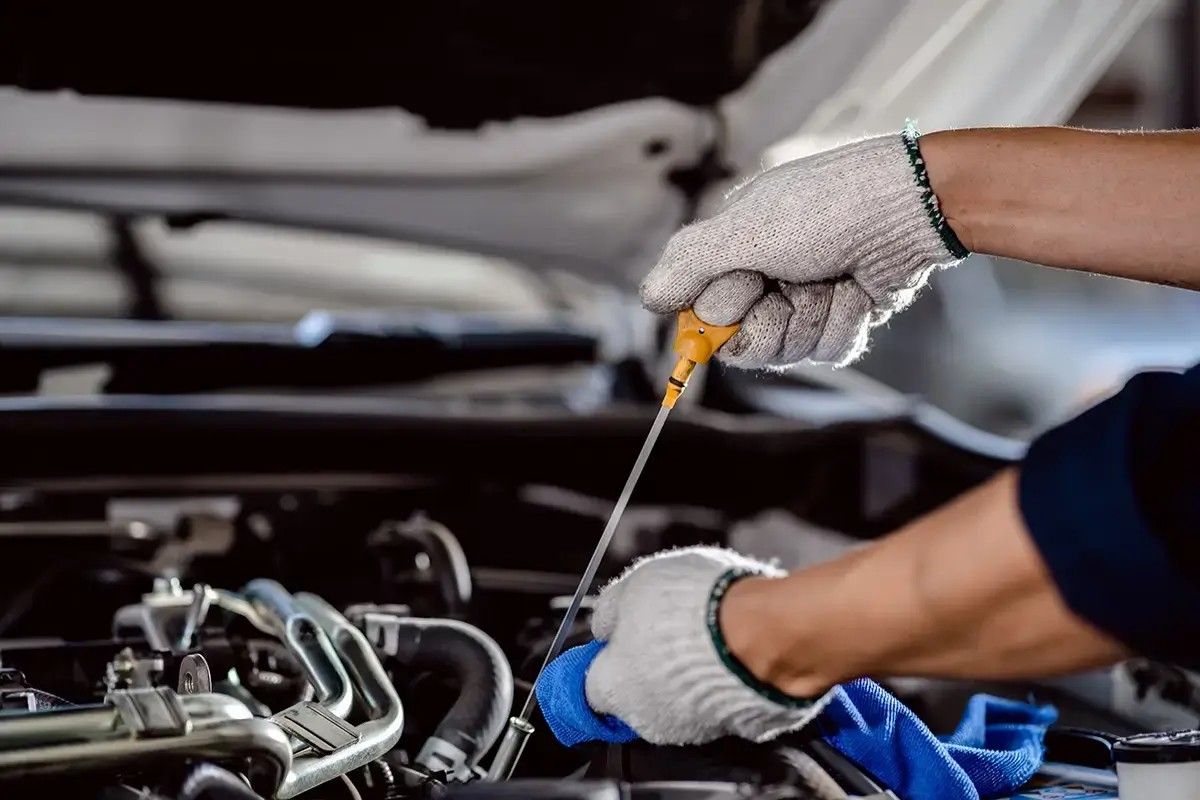Knowing how to check your engine oil is crucial for maintaining your vehicle’s health. While checking oil when the engine is cold is often recommended, sometimes it’s necessary to check it when hot. This guide provides a step-by-step approach to checking your oil when the engine is hot, emphasizing safety and accuracy. We’ll cover why it’s important, how to do it correctly, and what to look for.
Why Check Engine Oil?
Engine oil is the lifeblood of your vehicle. It lubricates moving parts, reduces friction, prevents overheating, and keeps the engine clean. Low oil levels can lead to catastrophic engine damage, requiring costly repairs or even engine replacement. Regularly checking your oil, even when the engine is hot, helps prevent these issues and ensures optimal engine performance.
Checking Oil When Hot: Safety First
Hot engine oil can cause severe burns. Always exercise extreme caution when checking oil with a hot engine. Allow the engine to cool down for at least 10 minutes after turning it off. This allows the oil to drain back into the oil pan and cool slightly. Even after 10 minutes, the oil will still be hot, so wear gloves and eye protection.
Step-by-Step Guide to Checking Hot Engine Oil
-
Park on Level Ground: Ensure your vehicle is parked on a level surface for an accurate reading. An incline can cause the oil to pool unevenly in the oil pan.
-
Locate the Dipstick: Open the hood and identify the dipstick. It typically has a brightly colored handle (often yellow or orange).
-
Remove and Wipe: Carefully pull out the dipstick and wipe it clean with a lint-free cloth or paper towel. This removes any old oil and ensures a clear reading.
-
Reinsert Fully: Push the dipstick all the way back into its tube, ensuring it’s fully seated.
-
Remove and Read: Pull the dipstick out again and examine the oil level. The dipstick has two marks indicating the “full” and “add” levels. Ideally, the oil level should be between these two marks. If it’s closer to or below the “add” mark, you need to add oil.
-
Add Oil if Necessary: If the oil level is low, add oil of the correct viscosity recommended by your vehicle’s manufacturer. Add small amounts at a time, rechecking the level frequently to avoid overfilling. Overfilling can also cause engine problems. Consult your owner’s manual for the correct oil type and capacity.
Interpreting the Reading
- Between the Marks: Optimal oil level. No action needed.
- Below the “Add” Mark: Low oil level. Add oil as needed.
- Above the “Full” Mark: Overfilled. Too much oil can cause damage. Have a mechanic drain the excess oil.
When to Check Oil When Hot
While checking oil when cold is generally preferred, there are situations where checking it hot might be necessary, such as during a long road trip or if you suspect an oil leak. Remember to always prioritize safety and allow for a cooling period before proceeding.
Choosing the Right Oil
Using the correct oil viscosity is crucial for engine performance and longevity. Refer to your owner’s manual for the manufacturer’s recommendations. Different climates and driving conditions may require different oil viscosities.
Conclusion
Checking your engine oil, even when hot, is a simple yet vital maintenance task. By following these steps and prioritizing safety, you can help ensure your engine runs smoothly and avoid costly repairs. Remember to consult your owner’s manual for specific recommendations for your vehicle. Regular maintenance, including oil checks, contributes to the overall health and longevity of your engine.

